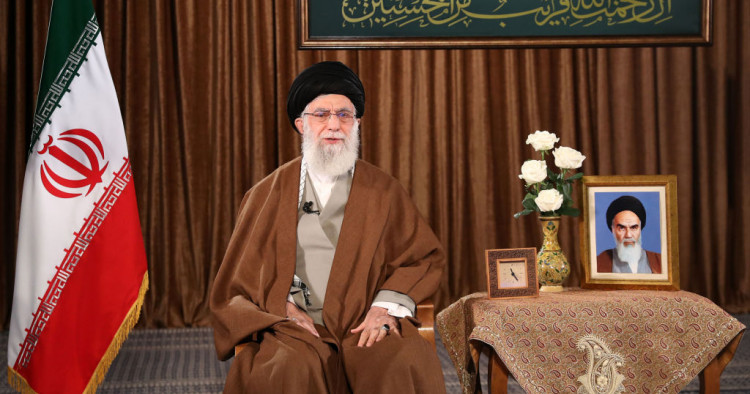Iran’s presidential elections on 18 June are not set to shift the status quo in the country. The man most responsible for this predicament is the unelected 82-year Supreme Leader Ayatollah Ali Khamenei who has been in power since 1989 and, in advance of the ballot, has signaled that he does not want presidential candidates to raise a question mark over Iran’s foreign policy.
Khamenei’s tight grip on the reins is illustrated by the regime’s vetting body, the Guardian Council, which he controls, single-handedly selecting who can run for the presidency. For this year’s election, 552 men and 40 women registered to run. Only seven men, and not a single woman, were approved – and any aspiring candidate that dared to question the wisdom of Khamenei’s stewardship of the regime was barred outright. Among them was former president Mahmoud Ahmadinejad who said after his disqualification that he will not vote and does not recognize this election as legitimate. Ahmadinejad was excluded from the running, even though he had a history of supporting this regime and protecting it from groups which wanted to reform the country back when he was president. All those candidates green-lighted are regime stalwarts while the two token reformist candidates are hardly agitators for radical change.
Highlighting the extent to which the rule is centralized, the Bertelsmann Transformation Index (BTI) 2020 for Iran has said: “The supreme leader, who is not elected by the people, holds absolute power in Iran. He determines Iran’s domestic and foreign policy, and has the power to interfere in legislative, judicial and executive decision-making.” Reflecting this concentration of power, the country came near the bottom of 137 countries surveyed by BTI’s political transformation index, ranking at position 126.
Meanwhile, the mass and indiscriminate disqualification of candidates was a throwback to the dark 1980s when Iranian presidential elections were foregone conclusions as a result of backroom deals. Since the candidates fail to offer any meaningful choice, a record low turnout is expected. In the 2017 and in 2013 elections, turnout was roughly 73 percent and 72 percent respectively. Turnout in June, however, is likely to slump, with most predicting a fall to between 20 and 30 percent. With social media buzzing with hashtags such as “I will not vote,” a voter turnout drop of over 50 percent would be a colossal embarrassment by any standard. Even members of the inner circle of Khamenei have questioned the blanket filtering out of candidates.
Photo by Iranian Supreme Leader Press Office / Handout/Anadolu Agency via Getty Images
The Middle East Institute (MEI) is an independent, non-partisan, non-for-profit, educational organization. It does not engage in advocacy and its scholars’ opinions are their own. MEI welcomes financial donations, but retains sole editorial control over its work and its publications reflect only the authors’ views. For a listing of MEI donors, please click here.













